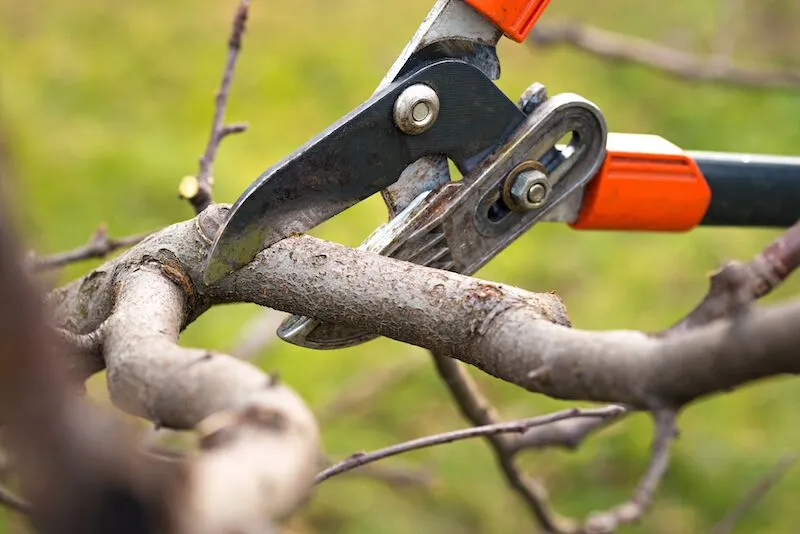Lifestyle
The Essential Guide to Safe and Effective Tree Pruning

Understanding the Basics of Tree Pruning
Tree pruning, a seemingly simple act, is integral to landscapes’ health and aesthetic appeal. It involves strategically cutting away certain tree parts, such as branches or stems, to manage growth, enhance appearance, or maintain safety. For any homeowner or property manager, grasping the basics of pruning can have significant benefits beyond mere aesthetics. While engaging in a reliable service like Tree Service Denver ensures professional results, a fundamental grasp enables you to make educated choices about your eco-friendly investments.
The art of pruning isn’t just about chopping off branches. It requires knowledge of when and how to cut, tailored to the type of tree and its specific needs. Understanding these factors can dramatically reduce the risk of injury or disease, promote the tree’s overall vitality, and encourage lush growth. Furthermore, proper pruning can lead to more substantial, vigorous trees that withstand adverse weather and contribute positively to local ecosystems.
Why Pruning is Important for Tree Health
Pruning is not just a gardening technique; it’s an essential practice for maintaining tree health. Eliminating dead or infected branches stops the transmission of decay and pathogens that might otherwise jeopardize the whole tree. Moreover, targeted pruning can help alleviate structural weaknesses, enhancing the tree’s ability to withstand storms and other environmental stresses. As noted in a U.S. News article on caring for older trees, thoughtful maintenance like pruning is especially vital as trees age, helping them remain stable and resilient. These benefits ripple beyond the individual tree, positively impacting the overall ecosystem in which the tree resides.
Best Practices for Pruning Different Types of Trees
Each tree species boasts unique biological and structural characteristics, requiring a tailored approach to pruning. For example, fruit trees like apples and cherries gain significant advantages from late winter pruning, which directs growth towards producing fruit in spring instead of promoting excessive foliage growth. Conversely, canopy thinning can improve the structural integrity of large shade trees, facilitating better air circulation and sunlight penetration.
A general rule of thumb is to restrict pruning to less than 25% of the tree’s canopy in a year to avoid undue stress on the tree. Additionally, making clean cuts at the appropriate angles and avoiding flush cuts—cuts that remove the branch collar and damage trunk tissue—promote efficient healing and reduce vulnerability to pests and diseases. Tailored pruning methods for specific species support tree vitality and maintain their natural shape and growth capacity.
Tools and Equipment for Efficient Pruning
A successful pruning session relies heavily on the right tools. Hand pruners or secateurs are ideal for small branches and precision tasks, while loppers provide the leverage required for medium to thick branches. Pruning saws are indispensable for those thicker limbs that could obscure the optimal structure of the tree.
Consistent maintenance of these tools is critical; sharp blades ensure clean cuts, which enables faster healing and reduces the risk of disease. Furthermore, specialized equipment like pole pruners extends reach, making it possible to tackle higher branches from the safety of the ground. Regularly inspecting and cleaning tools can prevent the spread of pathogens between trees, a crucial step in maintaining a healthy landscape.
When to Seek Professional Help
Although numerous tree maintenance activities can be handled independently, some circumstances require the skills of a professional arborist. Large or mature trees, for instance, pose a considerable risk if pruned incorrectly or in unsafe conditions. Trees’ proximity to power lines or buildings further complicates the task, necessitating specialized skills and equipment.
Engaging professionals guarantees safety and aligns with the industry’s best practices, ensuring trees receive the precise care they need to thrive. Certified arborists can assess tree health, suggest optimal pruning schedules, and execute the job precisely, providing peace of mind and long-term benefits for your treescape.
Safety Tips for DIY Pruning
Safety should always be at the forefront, regardless of the size or scope of your tree-pruning project. Protective gear is vital; this includes sturdy gloves to handle rough branches, helmets to safeguard against falling debris, and safety goggles to protect your eyes from dust and sharp fragments. Moreover, stable ladders are necessary when working at height, and you must ensure that you’re never pruning near electrical wires alone.
Familiarize yourself with basic first aid procedures as a precaution against potential accidents. Clearing the working area beneath the tree of other potential hazards will help reduce the chance of injuries. Always remain conscious of your surroundings, particularly vigilant of overhead dangers that might not be immediately visible during initial assessments.
Environmental Benefits of Proper Tree Maintenance
Thoughtful and regular tree maintenance extends beyond improving personal landscapes; it has substantial environmental benefits. Healthy, well-pruned trees are more efficient at absorbing carbon dioxide, improving air quality, and supporting diverse wildlife habitats. As highlighted in a City Lifestyle, these benefits extend to urban areas where tree care is vital in creating healthier, more sustainable environments. Metropolitan areas, in particular, benefit from the cooling effects of shaded streets and parks, which is increasingly critical as cities aim to mitigate the impacts of heat islands. Proper pruning practices contribute to these advantages, ensuring trees remain vigorous in urban ecosystems.
Common Tree Pruning Mistakes to Avoid
Avoiding common pitfalls in pruning is key to maintaining tree health and aesthetics. One significant error often made is the practice of topping, where branches are cut back to random stubs rather than being pruned back to lateral branches or the main trunk. This can lead to weakened, insect-infested, or diseased regrowth, ultimately jeopardizing the tree’s long-term health.
Additionally, neglecting to sanitize tools between trees can inadvertently spread disease, while incorrect pruning timings can cause unnecessary stress. Understanding the proper methods and contextual factors is essential to ensuring the best health of your trees.
This detailed guide on avoiding tree damage offers valuable insights into best practices that prevent common errors, helping ensure your trees grow strong and vibrant.
